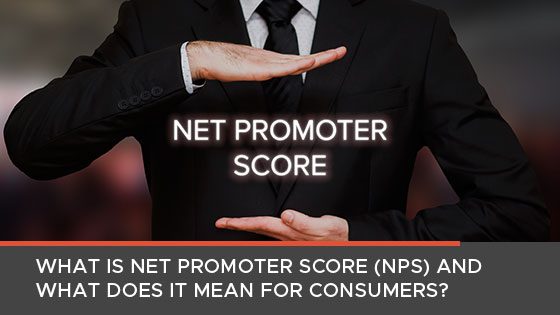How do you, as a consumer, know what companies are trustworthy and provide quality service?
Marketers and salespeople have used a variety of methods to back up their claims of excellent service. Sure, touting awards and certifications is a start but wouldn’t measuring the satisfaction and loyalty of actual customers be the best representation?
Companies have tried many different methods for interpreting customer loyalty through various performance metrics. Most of the time, these analyses are done with internally collected data and can be portrayed however the organization wants.
But there is a single metric that establishes the relationship between customer loyalty, customer satisfaction and growth.
This simple metric replaces the sophisticated surveys and statistical models that other marketers use, offering powerful insight that is easy to understand. It’s called the Net Promoter Score (NPS), which gleans profound insight into customer attitudes from a single, simple question.
Many of the world’s largest organizations use the NPS score system to track their customer satisfaction, let’s dig into what an NPS score means for you, the consumer.
What is NPS? How Does NPS Work?
NPS is a method of estimating customer loyalty to a particular brand or organization.
NPS polls customers with a single question: “On a scale from one to ten, how likely is it that you would recommend our company to a friend or colleague?”
By focusing on the word-of-mouth potential of a brand, it allows the company to gauge customer attitudes towards it more accurately than other surveying mechanisms.
Satmetrix developed the NPS score to gauge the percentage of consumers willing to put their reputation on the line for the products they consume.
Instead of focusing on brands’ marketing messaging, it focuses on consumers’ messaging – offering a window into the world of valuable word-of-mouth marketing.
The calculation merely subtracts the overall percentage of respondents that are promoters from the percentage that are detractors. Consumers’ answers show which category they fall into:
- Promoters. Customers who answer with a 9 or a 10 are extremely likely to recommend products or services.
- Passives. Any consumer who answers with a 7 or an 8 is satisfied, but vulnerable to competitors’ offerings.
- Detractors. Any score between 0 and 6 indicates unhappy, unsatisfied customers who will warn their friends and colleagues not to do business with that company.
The higher a score, the more individual consumers are loyalists for the brand. These are the people who advocate products and services and convince other people to become customers.
The score spans a range from -100 to 100, representing the respective extremes of every customer being a detractor, or every customer being a promoter.
Technically, any NPS score above 0 represents a positive overall average, but world-class companies tend to score in the 60s, 70s, and a select few even reach the 80s.
Importantly, the average score changes between industries. Retail companies and luxury hospitality services tend to compete on higher ground than cable TV and telecommunications providers. Any company that compares their score to competitors’ scores will want to keep this in mind.
How Organizations Improve Their NPS Scores
The Net Promoter Score is a prime indicator of how corporate strategy and product offerings combine to affect the lives of customers. By understanding the factors that influence a score, executives can identify opportunities to grow their companies.
Customer Relationship Management
Leveraging comprehensive data on customer interactions to improve the customer experience on an individual level can significantly improve NPS scores.
NPS surveys can be attached to any customer-facing business process, allowing employees to understand how individual processes affect the overall customer experience, and to gather that information in a centralized customer database.
Customer Accountability
Once a company begins gathering loyalty data from its customers, it can start to hold departments and even individual employees accountable for their interactions with customers. By pushing for more promoters and reducing the number of detractors, businesses can set clear goals for customer interactions.
Tying NPS Score to Performance
Individual employees and departments should be working to exceed their company’s overall net promoter score. If you link promotions and employee rewards programs to performance in this category, you can incentivize employees to do more for customers.
The NPS Score: More than Customer Retention
Customer retention is an essential factor for businesses in any industry, but it can’t tell the whole story by itself. There are many reasons why a customer may repeatedly purchase a particular company’s products while actively detracting that company to friends and family.
Think about the last time you heard someone complain about their phone bill – they probably didn’t immediately switch carriers.
The NPS score covers a broader surface area than customer retention because it gauges customers’ attitudes. It works with the fact that people talk about the products they like and complain about the ones they don’t. The more people praise your company, the more growth you’ll see across the board.
At Office Interiors’ we survey customers after every transaction, be that a full office renovation project, the installation of a new fleet of multifunction printers or an individual service call or order of printer toner.
To ensure that our feedback is as accurate as possible, we use a third party to collect the surveys and calculate our NPS score. We are proud to state that our NPS score is 87.
Want to read about the other methods we use to measure our customer service performance?
Cory Porteous
Marketing Manager
Office Interiors


